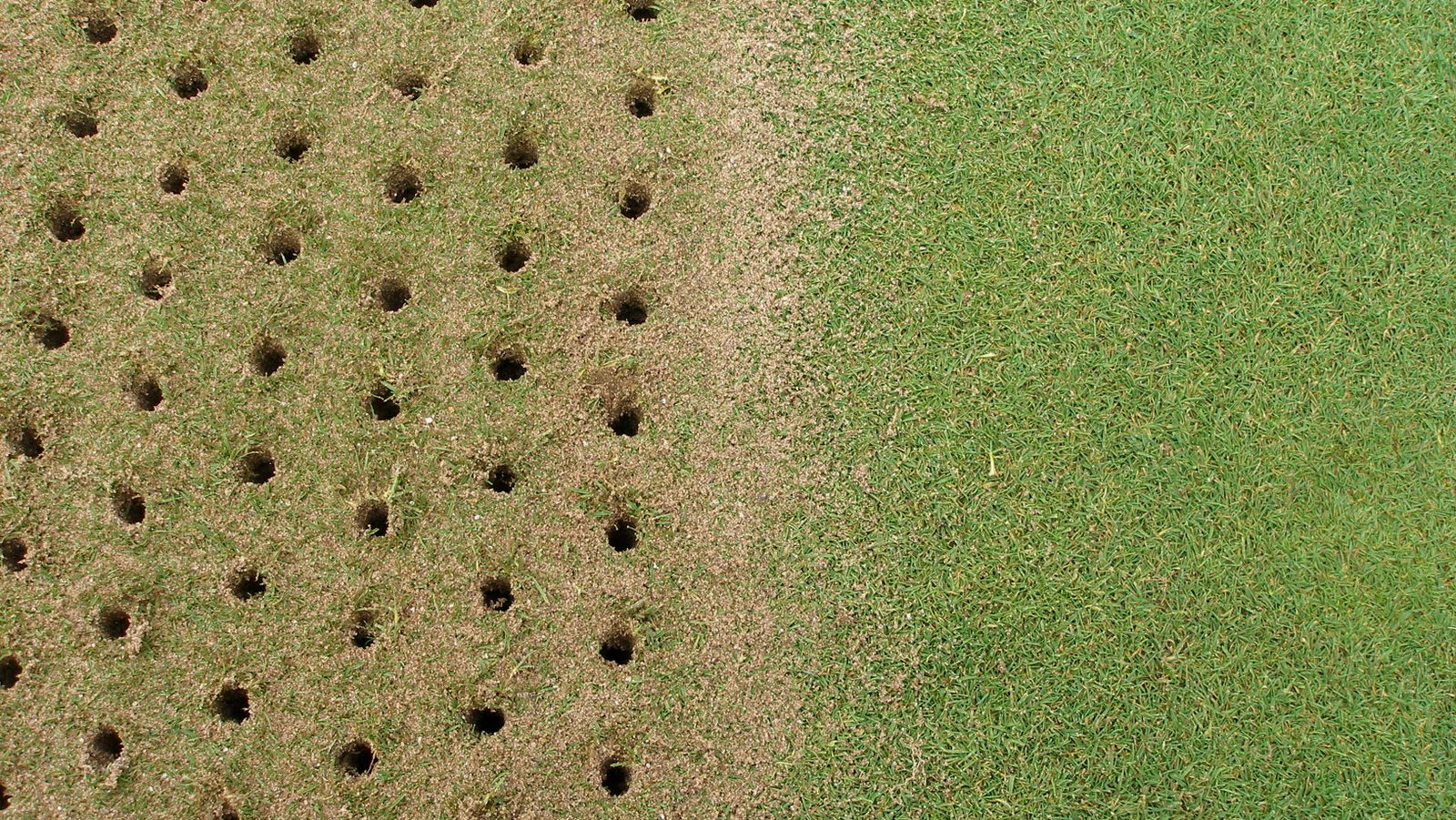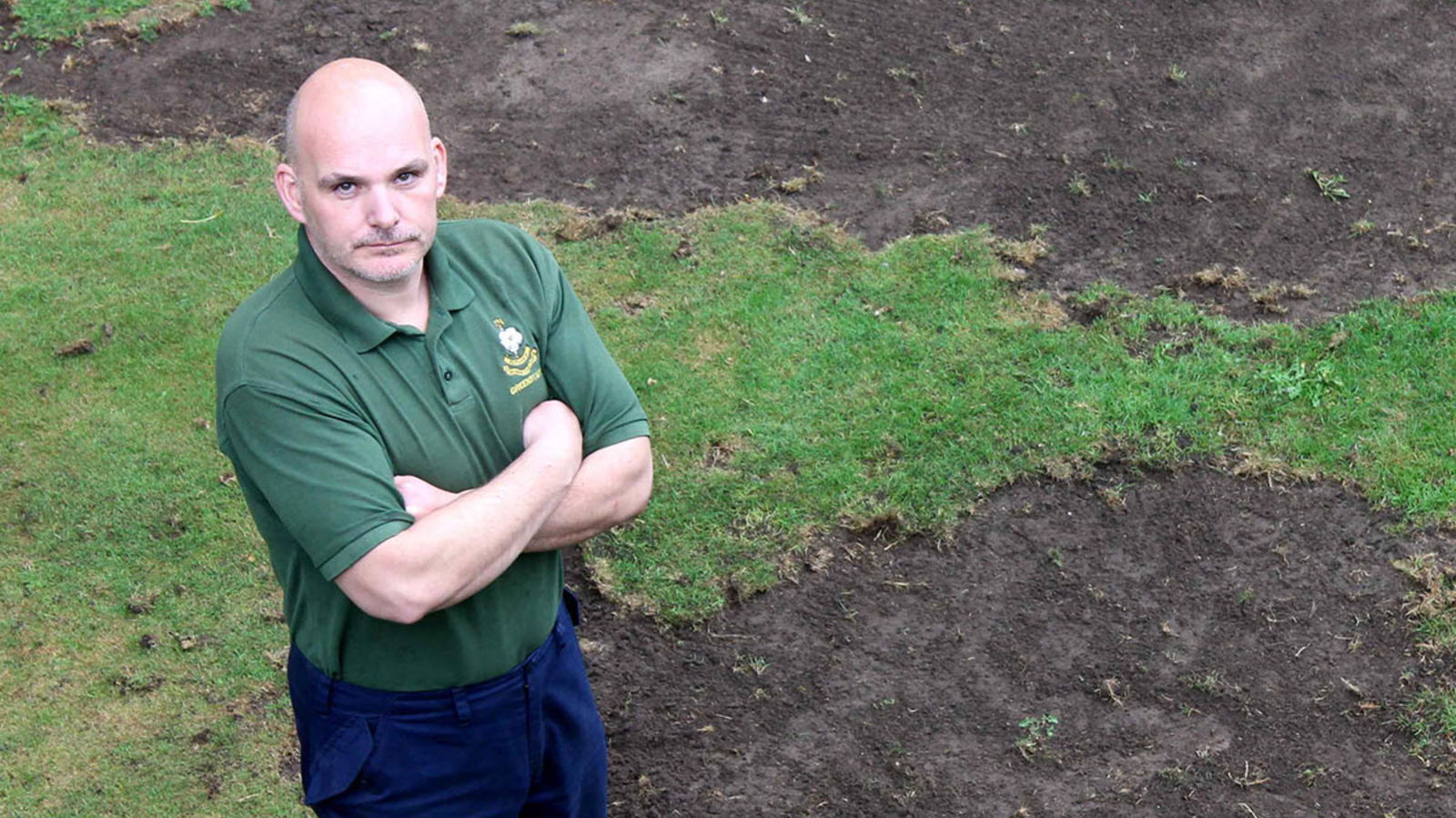Why is it important to poke holes in your greens?
One of the most important greenkeeping questions answered...

Stuart Green, BIGGA’s head of member learning, explains why aeration is a vital tool for maintaining the health of golf greens.
To understand why aeration is critical to healthy turf, it is essential that the golfer understands that the roots of grass don’t grow in soil. They actually grow in the air spaces between the soil particles.
On putting greens, the aim is to move water away from the surface as quickly as possible. On soil greens, that can be quite difficult but the requirement is to keep the surface in contact with the sub surface.
That means aerating at all different depths. The more that can be done, the more effectively water can be moved away from the surface.
Keeping the surface dry has the benefits of better quality grass, reduction in disease and disorders, such as moss, and increased all year round playability.

What are the benefits of aeration?
- Compaction relief and improved surface performance
- Better penetration of water and air
- Fertiliser/nutrients delivered into the root zone
- Improves soil structure
- Improves rooting capacity
- Longer use of the surface – increased playability all year round
- Releases toxic gases from the soil
- Increases shoot growth
What is solid tining?
A solid tine is a piece of cylindrical metal that punches down into the soil and makes a hole. Depending on what machines these are attached to – such as a Verti-Drain machine – it can be adjusted to produce ‘heave’.
So instead of going straight in and out again – which will provide minimum surface disruption – it can be adjusted so it lifts the soil, fractures it and opens the ground up underneath as it comes out.
They can be micro tines, which are thin needle-type tines (8mm) that produce lots of holes over the area, to 24mm tines that can make sizeable holes and will generally go a lot deeper.

What is hollow tining?
A hollow tine is a round tube that penetrates into the ground, collects a core and when the tube penetrates the ground again, the core is pushed out through a hole.
This allows greenkeepers to remove material, such as poor quality soil and thatch and allows water and air into the root zone.
When a core comes out, it needs to be replaced with something. So, when thatch is removed, top dressing is usually applied behind it to fill up the holes.
Think of it as a soil exchange programme. Thatch and soil is removed and quality sand is added to aid water movement through the surface and drainage. That makes it a lot easier for the plant to grow.
What is slit, or knife, tining?
On a drum, a series of blades rotate through the soil as the machine moves forward.
They slice through the surface and create fissures and cracks in the ground.
They allow for lateral water movement through the soil and aid root development.
What is air-injection?
A device, such as the Air2G2 machine, will punch a spike into the ground and a compressor will blast a massive amount of air into it.
The air pressure causes the soil to lift and fracture, thus breaking up compaction by fracturing the soil and improving drainage and root growth.
What is star tining?
Similar to slit/knife tining, a Sarel Roller – a machine with a number of spikes – runs over the surface.
There is minimal disruption to that surface and it allows it to breathe as well as take in water.
Particularly effective during the summer, a star blade is around an inch long at most.
What is an Ecosolve?
Also known as a ‘drill n fill’, the machine sits on the surface and drops down a series of drills as far as two feet into the ground.
It removes material like a drill, which is then back filled with sand or any material, which helps to aid drainage.
This article was first published in Your Course, the twice-yearly magazine from the British & International Golf Greenkeepers Association that aims to inform golfers about what goes in to the maintenance of a modern golf course and the greenkeepers whose job it is to produce the surfaces.


